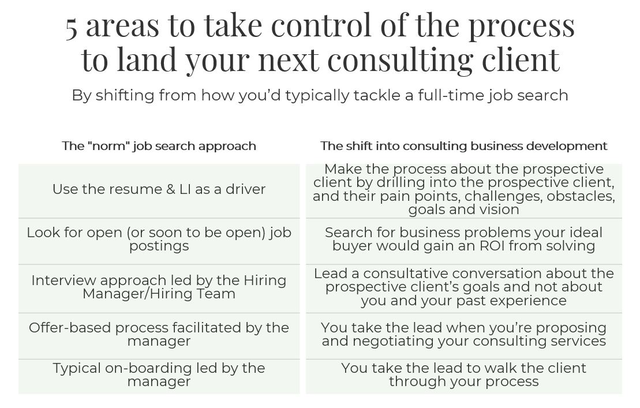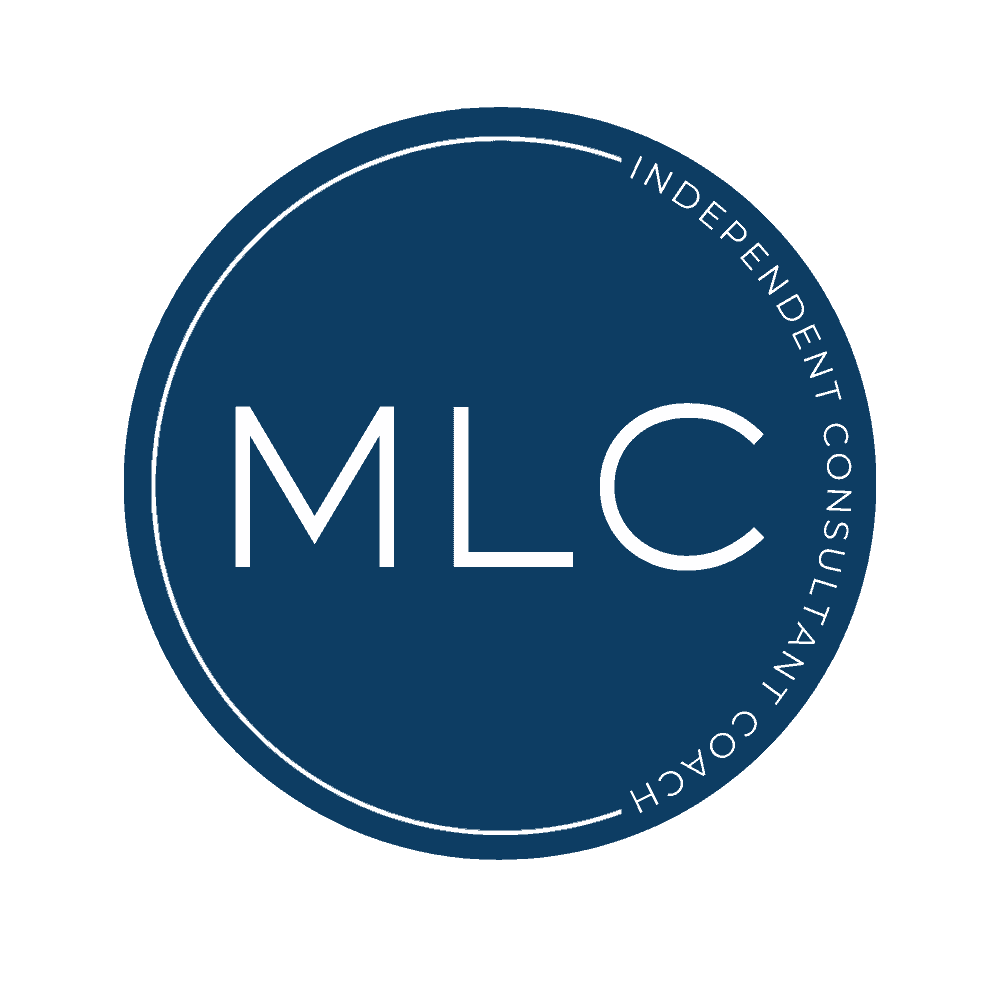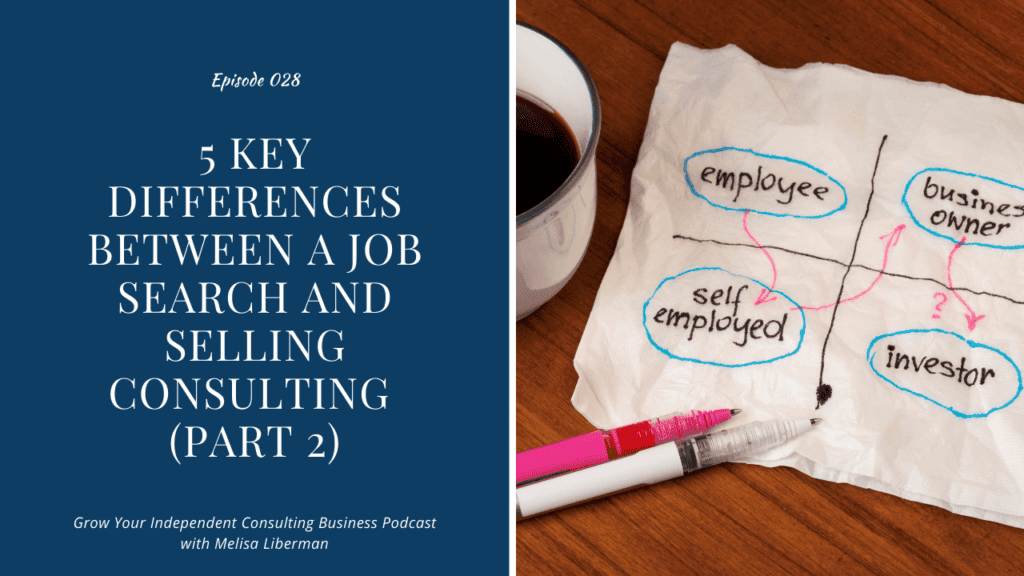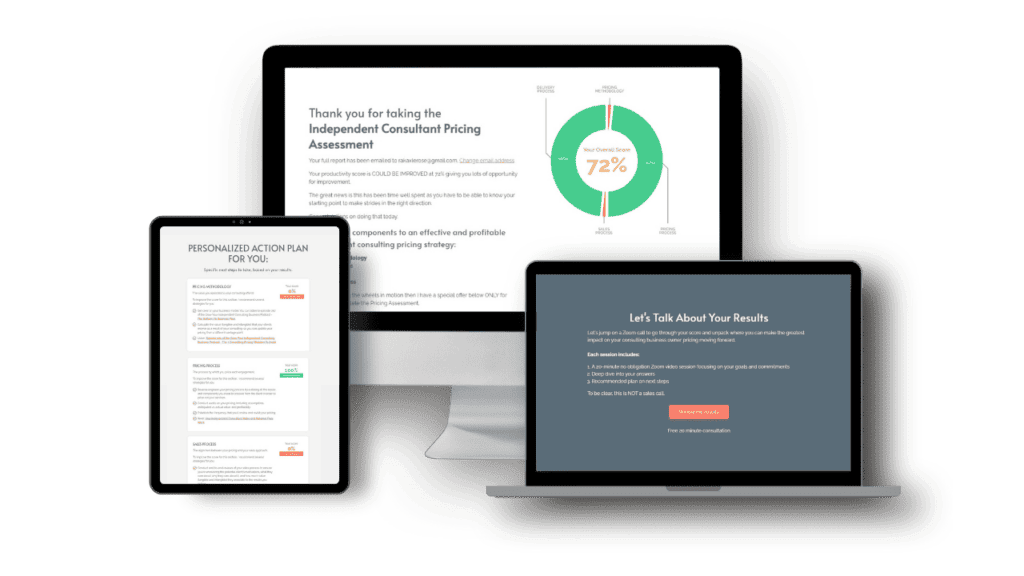There are several critical differences between searching for a job and selling consulting services.
If you approach selling consulting in the same way you approach a job search, you’ll end up under-earning and under-utilized. In this episode, I share 2 differences between a job search and selling consulting services, so you can avoid these costly mistakes.
In this episode, I walk you through two additional differences between a job search and your consulting business development process. After you recognize the differences, you’ll be able to position yourself more effectively, and in turn, land more lucrative and fulfilling consulting clients.
On this episode, I will discuss:
[01:34] Recap of the three differences discussed in episode 027
[08:09] Difference #4 – Taking the lead in the offer and negotiation process rather than relying on the hiring team to present an offer to you
[12:59] Difference #5 – Approaching your consulting work as a consultant vs. a job seeker in the onboarding process
[17:03] Wrap up
[20:01] Putting this episode into action
And here’s the table I referenced for you:
PUT THIS EPISODE INTO ACTION
Ready for help figuring out how to leverage these sales strategies in your IC business and ultimately double your revenue without working more?
- I invite you to apply for a strategy call with me.
- On this call, we’ll dive into your business and get clear on your goals and challenges and determine an action plan for you so that you can create the business impact, income, and flexibility that you desire.
- To get on my calendar, please visit www.consultmelisa.com.
ADDITIONAL RESOURCES —
- Click here to download the 27 WAYS TO LAND YOUR NEXT CONSULTING CLIENT
- Click here to download my CHECKLIST FOR BUILDING YOUR CONSULTING PIPELINE IN 26 MINUTES A DAY
- Click here to download the 7 MISTAKES THAT ARE FEEDING YOUR CONSULTING FEAST OR FAMINE CYCLE
SEE WHAT I’M UP TO —
RATE, REVIEW, & FOLLOW ON APPLE PODCASTS –
If you love the content that I am providing, please consider rating and reviewing my show! This helps me support more people — just like you — create a growing, profitable IC business.
Click here, scroll to the bottom, tap to rate with five stars, and select “Write a Review.” Then be sure to let me know what you loved most about the episode!
And, if you haven’t done so already, please consider following the podcast. New episodes drop weekly and if you’re not following, there’s a good chance you’ll miss out.
FULL TRANSCRIPT
**note: This is an automated transcript, so please ignore spelling errors and grammar mistakes*
00:02
Welcome to the Grow Your Independent Consulting Business podcast. I’m Melisa Liberman, a fellow IC and business coach. On this podcast, I teach you to become a consistently booked independent consultant without becoming a pushy salesperson or working 24/7. If I can do it, you can too.
00:23
Listen on to find out how. Welcome back to the podcast. Today we’re on part two of a two-part series on the five key differences between job search and selling consultant, how those differences impact your bottom line as a consultant how much money you’re making if you’re underpaid or not, and how effective you are at closing new business. So I want to continue where we left off in the last episode. If you haven’t caught that episode yet, no worries, it was episode 27, you can go back and listen later, I will give you a synopsis of what I said. And then we’ll dive into the second part of what I was sharing with you. So what we’re talking about are those five key differences between job search and how you’re used to landing new opportunities and new roles versus the shifts that you need to make in order to be really effective at business development and making money as a consultant. So I shared with you last week, that I had a current client that kind of brought all of this to the head and inspired me that’s what inspired me to create this two-part series. She had come to me really frustrated that she wasn’t filling her consulting pipeline or closing deals, and was underearning, and really at the point of almost giving up. And so as we started digging into what was going on with her, we realized that there were some themes happening, some themes around her treating her business development as she was used to writing what she was used to when you were landing a new job. And not necessarily looking at what she was doing from the lens of a consultant and what it’s like to sell consulting services, versus recreating what she was used to when she was looking for a new full-time role. And so as we peel back that onion and started realizing some very subtle things that were happening with her in her consulting business, we were able to get her to the place where she was shifting away from being kind of a traditional job seeker into being a business owner of a consulting business where she was able to really run her own process sales processes, and therefore start landing business that she was paid, you know, more money to provide her services versus what she had been paid in the past as more of staffing augmentation type roles. So that was the inspiration behind this two-part series. And so what I want to do with you is give you a little bit of recap on what I shared in the last episode number 27. And then we’ll dive into the final two differences of how to approach your consulting business development process different than what you might be used to approaching from more of the job seeker perspective. So the quick recap, and then we’ll finish out this entire series with the last two tips and a summary of how you can implement this in your business. So the recap, what was this client doing in effect that was ineffective, really boils down to two things. Number one, she was not positioning herself in the most effective way. She was coming across more as a job seeker. It was subtle, right? These are subtle things. But she was coming across more like a job seeker than she was as a consultant and a subject matter expert and someone who can solve a business problem that a client wants to pay to solve. And the second thing that she was doing kind of more from a theme perspective, is that she was really not clearly understanding what she was selling. She didn’t realize the difference between what it looked like to sell herself like she would in a normal job seeker type of a situation for a full-time role, versus her selling a solution to a problem. And what that really looks like in practice when you’re executing the steps of your consulting business development process. So those are the two things that were happening for her and I know that it’s so common for those of us who are consultants to fall into this trap because we’re used to being a job seekers. More so than we’re used to being a consultant who’s selling their own services. And when we fall into this trap, we end up creating scenarios where we’re relying on the recruiters to help us land new consulting roles, where we’re relying on marketplaces to land new consulting roles that end up creating an hourly type of a compensation scenario, we end up relying on our network that we’ve really exhausted, but we just keep going back to them over and over again, because we haven’t figured out the way to position ourselves and think about this sales process this business development process in a way that is more from the consulting lens than from the job seeker lens. So those are the impacts if you are falling into the same pattern that my client did, that we want to help you get out of. Alright, so today, I’m going to go through the first three differences that we talked about in episode number 27. And then we’re going to talk about the two additional differences that you’re going to want to be aware of as you’re approaching your business development process. And then I’ll pull all of it together for you and give you some action items that you can take immediately in your business so that you’re not being underpaid, underutilized, and at the mercy of your client from a schedule perspective. Alright, so the first three differences that we covered last week, not going to go into detail with these, but they were number one, you could be very well misusing your resume and LinkedIn profile as your primary sales tool, versus it’s irrelevant, or it’s kind of a formality. So that’s number one. That’s a key difference between selling, consulting, and selling yourself as a full-time job seeker. The second is you could be uncovering opportunities in a way that puts you at a disadvantage. So if you’re approaching your business development in more of a way that is looking for results in you getting put into an org chart in some way where you’re maybe staff augmentation or additional capacity. The root cause of that is that you’ve approached your business development process as if you were a job seeker more so than as you are selling consulting. And then the third bucket is that you could be treating the process to discuss your consulting services and really craft a solution for your potential client more as an interview than as a consultative sales process. And as a result, you end up either not landing the client or leaving money on the table. So those are the first three differences between a job search and selling your consulting services. Again, for all of the detail around that, go back to episode number 27. Now, let’s fast forward and talk about number four. And number five key differences and round this out. So number four, is that you could be managing the negotiations on your consulting services, like your statement of work more as the way you would have done it as a job seeker than as you should be doing it as a consulting business owner. So let’s talk more about what that means. And really the importance of it right, the success of the negotiations over your consulting statement of work really ends up impacting your bottom line and impacting who owns your time, and your schedule, and how much time you’re spending on that clients. So this is a pivotal moment in your process. And if you approach it as a job seeker would just by default, you’re going to end up leaving money on the table. And you’re going to end up being more at the mercy of the clients versus you being able to take ownership of your own time, your own schedule, and the way that you deliver your services. So let’s just look at this as a traditional job search. What ends up happening is that generally the hiring manager, and the hiring team, are the ones who take the lead. That’s how a traditional job search that we’re used to takes place. They figure out you know, based on your salary ban based on the level of the job that you would be filling the HR kind of inputs, the inputs of you know what you asked for from a range, all of those inputs, right to figure out what they’re going to offer you. They take the lead, and there may have been some prior discussion before you get to an offer, but they are the ones who end up putting on paper, what they’re going to offer you, and then you start from that position. If you recreate that in your consulting business, it puts you at a disadvantage because you’re the one kind of taking the back Back seat and responding to what it is that they’re offering you. And they’re also thinking about you in a way that is more of you providing something similar to what a job seeker would be providing just on a contract basis versus a full-time basis. So they’re looking at you differently. And, uh, back to that client that I was talking with you about, your positioning is not where you need it to be in order for you to be making the money and having the independence that you want to set yourself up for. So if you take that traditional job search type of approach, that’s going to be the result for you most of the time, right, versus you putting yourself into wearing the hat of a consultant of a business owner. And you taking the lead when it comes to proposing to a potential client, what it is that you, you want to offer to them based on the problem and the way you understand it from all of the questions that you’ve asked them up to this point, it’s you taking the lead to say, this is the solution that I recommend to you. And this is the approach I recommend to you. And this is the business case for why it’s important for you to solve this problem and what the benefits will be for you and what the return on investment will be for you. It’s you taking the lead versus letting the hiring team take the lead and offer something to you. And when you’re not the one taking the lead in this process, then again, you’re leaving money on the table most of the time. And in a lot of cases, you may not they may not even move forward with you. They’re not looking for another employee, they’re looking for someone who can strategically help them solve a business problem and lead them through that process, take the weight off of their shoulders of having to deal with yet another, you know, employee and being able to outsource some of the challenges that they have to you. So this is where you want to be able to step up to the table and lead them through the process of providing a proposal and leading the negotiations offer giving a couple of options if that makes sense. And you driving them through the process to understand who’s going to sign off on this, who could be potential attractors, how are you going to get this process successfully through your internal politics and helping them to maneuver it, versus relying on them to maneuver it. So this is such an important part of the process where you don’t want to default back to the things that you’re used to when you’re a traditional full-time job seeker, where you want to look at this process differently as a consulting business owner, and you’re taking the ownership of the process and helping the client to get that buy-in, and ultimately approval to proceed with the work that you’re going to be doing with them.
12:59
All right. And then the last difference number five is the difference between approaching your consulting work as a consultant versus as the default that you might be used to just because it’s been the predominance of your career as a job seeker. That differences how you onboard, as an employee versus how you kick off an engagement as a consultant. So if you’re approaching your new clients, from that full-time employee lens, versus from your consulting lens, you’re going to end up putting yourself at a deficit right away when you’re starting this project. And I definitely don’t want that to happen for you. So let me tell you what that means. If you’re approaching your new consulting engagement as more of an employee mindset, you’re again, allowing that hiring manager, the person, your buyer, the person who you know, who signed your consulting statement of work, or who brought you on board as a consultant, you’re putting them in the driver’s seat, you’re allowing them to help you navigate the organization and get up to speed on their specific business challenges. And it creates a perception that you’re someone who waits for the direction from others, and your value then diminishes. And quite frankly, your influence and your potential future compensation if there are multiple phases to what it is that you’re doing, or follow on work. You don’t want to put yourself into that mindset of employee onboarding. You want to put yourself into the mindset of I am leading an engagement kickoff. I’m taking the lead on what a successful engagement looks like. I’m not waiting on the hiring manager to do anything. Introduce me to anyone. I’m helping the hiring manager know what’s going or not the hiring manager or the company buyer, I’m not relying on the consulting buyer to tell me what to do or to introduce me internally, or to kind of pave the way to make it easier on me as a consultant, what I’m doing is leading that process and helping the clients stay one step of the head, I need to meet these people, can you introduce me, who’s still potentially an attractor, these are the recommendations that I have to get them on board, those kinds of things. And this is what you do as a consultant. So this is probably the one that you’re most comfortable with really wearing your consultant hat versus the job seeker hat. But sometimes we fall into those kinds of old, familiar patterns. And so I really want to point this out to you. Because it’s such an important part of the process to help make sure that you’re establishing your level of influence, that you’re establishing the boundaries that you can then, you know, enforce later on about when you’re working and how you’re working. And that you’re really the expert in charge here versus again, them thinking of you in more of that staff augmentation type of positioning. Alright, so those are the five areas that you’re going to want to really think about for you and your business, to make sure that you’re not recreating the experience of a job seeker, a full-time job seeker, and that you’ve really approached your consulting, business development and kick-off process from wearing the hat of a consultant. And as a result, if you’re able to do this, you’re going to elevate yourself, you’re going to improve and increase the amount of compensation, the value that they see in you, and how much they’re willing to pay you for that. And you’re going to have more control over your schedule, more control over the way that you work, how you work when you work, and the way that you’re delivering to your clients. So let me just wrap all of this up for you, with the five key points, so that you can implement this in your business, don’t just listen to these podcasts episodes, go take this and implement it in your business so that you can continue increasing your revenue without having to work more. Okay, so the five key points here are your normal job search, you would use your resume and your LinkedIn profile as a driver. Whereas when you’re running a successful consulting business development process, you’re shifting that into a process that’s centered around your prospective clients, and their pain points and challenges and obstacles and vision. In a normal job search, you would be looking for open or soon to be open job postings, boxes on an org chart. Whereas in consulting, and business development, you’re searching for business problems, that your ideal buyer wants to gain some kind of return on investment for solving. In a normal job search process. You’re executing through that interview approach that’s led by the hiring manager and the hiring team. In your consulting business, you want to be the driver, you want to be the one who’s leading consultative conversations, and helping that potential buyer navigate their own organization, figuring out who the supporters and the detractors and the influencers, all need to be in and helping them to navigate their own organization. And the fourth area is that in a normal job search, it’s going to be an offer that’s based on a process that’s facilitated by the manager. Whereas in a consulting business development cycle, you’re taking the lead, you’re figuring out how you want to craft this, propose it, and then negotiate and help that buyer navigate again through their organization. And then the fifth area is that you’re not, you’re not relegating yourself to the typical onboarding process. Instead, you’re taking the lead to walk the client through your engagement kickoff process, and staying one step ahead of them. And all of this comes together to help you ensure that you are seen in a way that is elevated, that you are the expert that you are someone who has a solution that can solve a business problem. And you’re not just relegated I’ll use that word again, to someone who’s just providing additional capacity for them. That’s much more of a commodity. So this helps you to land more lucrative and fulfilling consulting clients and then ultimately, set the stage so that you can drive elevated benefits and return on investment and outcomes for
19:57
them. So that’s what I have today, what I want to encourage you to do are two things. Go to the show notes, I have a table in there that recaps exactly what we talked about in these last two parts. So you can look at that I learned a lot by writing things, which is ironic since I’m doing this podcast. So I like to provide those types of resources to you in the show notes. And then the second thing that I encourage you to do is download my 27 simple ways to find high-paying consulting clients. These are real-life stories, not just made-up theories. These are real-life stories of how you can go out and land high-paying consulting clients and take control of your business development process as a consulting business owner would and not fall into those traps of thinking about this as an employee. Alright, thanks for tuning in. And we’ll see you again next week. Thanks for joining me this week on the Grow Your Independent Consulting Business podcast. If you like today’s episode, I have three quick next steps for you. First, click Subscribe on Apple podcasts or wherever you listen to make sure you don’t miss future episodes. Next, leave me a review in your podcast app so other independent consultants can find it beneficial, and finally put the ideas from today’s episode into action. Head over to Melissa lieberman.com for the show notes and more resources to help you grow your consulting practice from your first few projects into a full-fledged business. See you next week.


